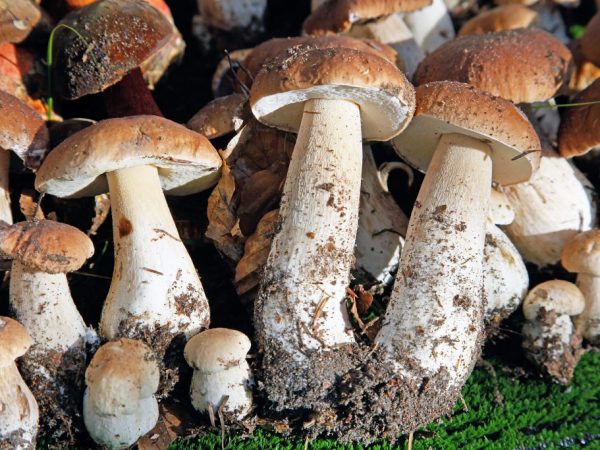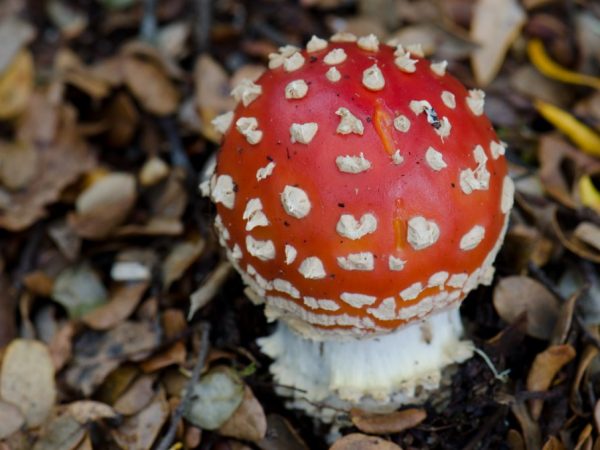Features of fungi-symbionts
Symbiont mushrooms are one of the most amazing life forms. There are many types of organisms that can be called symbionts. The process of symbiosis in nature is essential.

Features of fungi-symbionts
Symbiont mushrooms
Mushrooms are a unique group of living organisms on our planet. The science of mycology is engaged in their study. Today we are interested in some of the most common representatives of the kingdom of Mushrooms - those that are able to form symbiotic associations with representatives of the kingdom of Flora.
Irina Selyutina (Biologist):
Modern science knows the following groups of mushrooms by the way of nutrition:
- Saprophytes, or saprotrophs, or microconsiderations: use for their nutrition organic compounds of dead tissues of both plants and animals. They play an important role in the biological circulation of substances in the biosphere.
- Parasites: organisms whose lifestyle is very closely related to representatives of other species, inside or on the surface of the bodies of which they live, feed and in most cases harm them in a certain way.
- Symbionts: organisms of different species entering into mutually beneficial cohabitation.
Symbionts are widespread throughout the globe. For a long time, scientists could not figure out the secret of fungi entering into a symbiotic union, but they managed to do it.
Symbiosis process
Many fungi enter into a symbiotic relationship with the host plant. They braid its roots with their hyphae. This formation is called "mycorrhiza" or "mushroom root". Mycorrhiza helps fungi get the nutrients they need directly from the roots of the host plant: carbohydrates, oxygen and carbon dioxide. It does not harm the owner. The mycelium helps him obtain beneficial compounds from the soil, and also protects against the effects of harmful microorganisms by releasing antibiotics into the environment.
Irina Selyutina (Biologist):
Mycologists distinguish the following types of mycorrhiza, which differ in their structural features:
- Ectotrophic: fungal hyphae simply braid the young root of the plant, forming mycorrhizal tubes or a kind of cover. In this case, the hyphae, although they penetrate the rhizoderm of the root, spread only along the intercellular spaces, and do not enter the cell cavity. In the case of the formation of this type of mycorrhiza, the root hairs atrophy in the plant - they are replaced by the fungal hyphae and the root cap is reduced - it is likewise replaced by the hyphae that have formed their own “cap”. The root is divided into zones with the formation of the Gartig network.
- Endotrophic: the fungal hyphae pass into the cell of the root cortex through the pores in its membrane and form there clusters resembling tangles. At the same time, the mycorrhiza is poorly visible from the outside of the root.
- Ectoendomycorrhiza: represents something in between, combining the features of the previous types of mycorrhiza.
This is how a union is formed that is beneficial for both organisms.
Thanks to the numerous experiments of mycologists in a number of countries, by 1953the existence of the relationship of representatives of various tree species with 47 species of fungi belonging to 12 genera has already been proven. To date, it is known that more than 600 species of fungi are able to participate in the formation of mycorrhiza. It also turned out that each mushroom can enter into a symbiotic relationship not with one, but with several tree species. All records were broken by the sclerotia-forming marsupial fungus - graniform cenococcus. Under the conditions of the experiment, he was able to form a mycorrhiza with 55 species of tree species. By the way. The most specialized in relation to the formation of mycorrhiza is the larch oil can (sublarch), which can form mycorrhiza only with cedar pine and larch.
Approximately 90% of all plants on our planet enter into symbiosis with fungi.
Variety of fungi-symbionts
Many edible and poisonous organisms known to man belong to symbionts:
- white (boletus);
- boletus;
- chanterelle;
- oiler;
- mushroom;
- boletus.
Among the poisonous organisms, symbionts are the following:
- toadstools (white, pale, spring);
- fly agaric (red, grebe, panther);
Such fungi are not able to exist without host plants, because. from them they receive all the organic compounds necessary for them, which plants form in the process of photosynthesis.
Features of the symbiont organism

Fly agarics are found in all forests
A feature of such organisms is a kind of selectivity. An example of this would be the well-known boletus, which is unable to grow in alder or aspen forests. The common fly agaric forms mycelium, which does not require a specific host, therefore it is found in any forests. But mushrooms and boletus are tied only to conifers.
Perfect symbiote
Tsenokokkum - one of the most widespread and at the same time little studied fungi that form mycorrhiza. It is found both in the Arctic and in tropical latitudes. It is most often found in the roots of plants that can survive in extreme conditions. It forms ectomycorrhiza with a huge number of gymnosperms and angiosperms, as well as some ferns.
Studies have shown that this representative of the fungal kingdom produces few enzymes that destroy plant tissue. These enzymes are found mainly in common mushrooms, which decompose organic matter for specific purposes. Zenokokkum actively forms proteins that are embedded in the cells of the host plant and pump water there. Since this type of protein is activated during drought, it is not surprising that trees form symbiosis with this particular organism - it helps them to get water at a time when there is very little of it.
Interesting facts about symbiont mushrooms
A characteristic feature of fungi that form mycorrhiza is that they cannot be grown in artificial conditions. Their mycelium is capable of being in the soil, absorbing and transferring nutrients, but will not form fruiting bodies. Without a certain type of tree, such mushrooms do not bear fruit.
The host plant will grow poorly, develop slowly, and eventually die if there is no symbiont fungus in the soil nearby. An example of this is pine seedlings, which grow much faster if spores of a certain type of fungus have got into the ground.
Sometimes there is a symbiosis between fungi and ants. Insects feed on nutritious hyphae, creating entire "mushroom farms" underground. This is beneficial for mushrooms, because the ants fertilize the soil generously.
The benefits of symbiosis
Mycorrhiza is a means of communication between plants. When something appears in the environment that can harm a plant, the mycelium through chemical compounds "sends" information about this to other fungi, and they meet the pest already prepared. In a way, this resembles the transmission of information through the human nervous system.Any forest is a gigantic information network.
The benefits of symbiosis are as follows:
- Symbiosis helps by increasing the adaptation (especially to unfavorable conditions) of the organism to the environment.
- With its help, it will be possible to increase the yield of cultivated plants.
- Thanks to symbiosis, new groups of organisms (for example, lichens) can form.
Conclusion
Symbiosis is an important process in nature, thanks to which symbionts receive certain benefits. There is a wide variety of types of such organisms.




